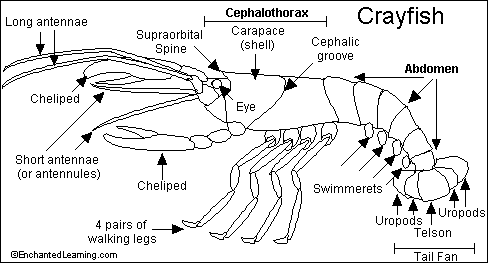
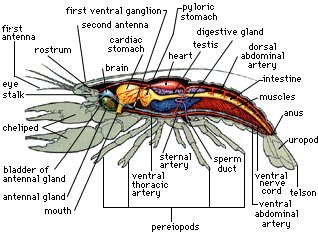
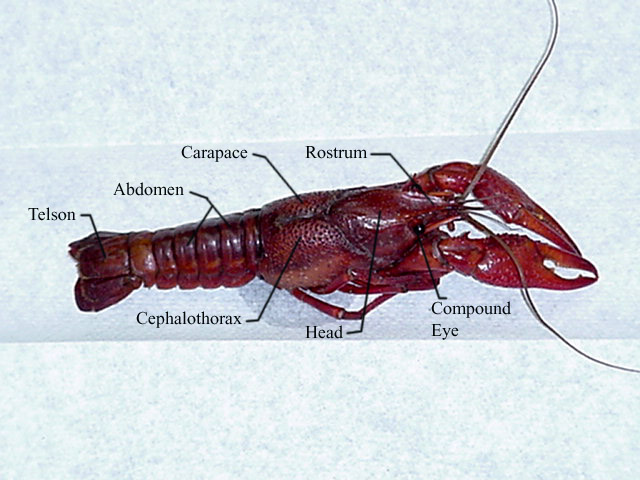

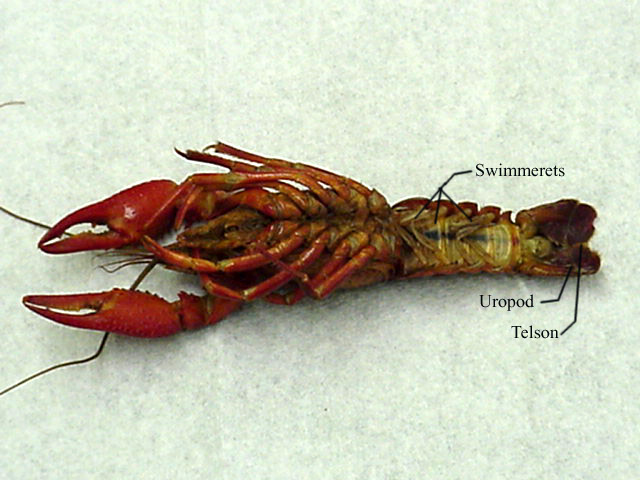
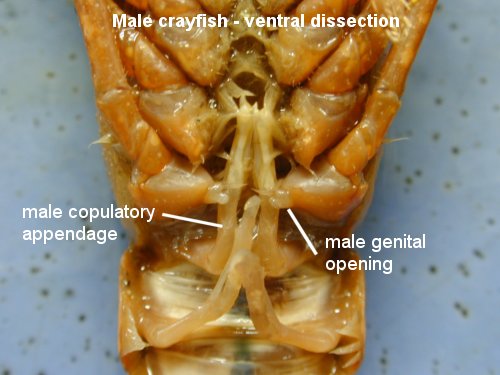

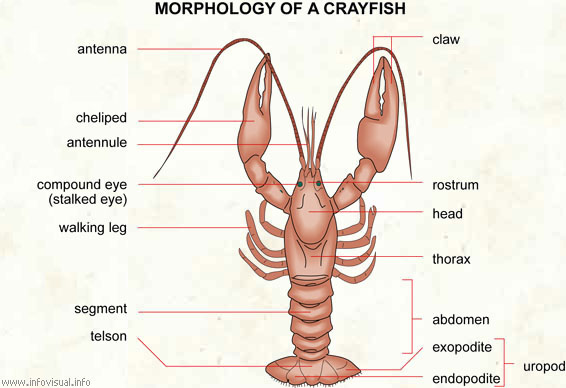

Crayfish Dissection Lab Companion
You will be responsible for identifying the following items on a crayfish specimen:
cephalothorax
abdomen
antenna
antennule
swimmerets
walking legs
cheliped
rostrum
mandible
cervical groove
uropod
telson
anus
stalked eye
carapace
dorsal suture
dactylopodite
propodite
carpopodite
cardiac stomach
digestive gland
gastric mill
gills
heart
intestine
ventral nerve cord
You will be responsible for answering the following types of questions concerning the crayfish:
Explain how to distinguish between male and female crayfish.
What does the term "in berry" refer to when discussing crayfish?
What is the "gastric mill" and where in the crayfish is this structure located?
The order the crayfish belongs to is called "Decapoda". The prefix "deca" means ten, and the suffix "poda" means leg. Why is this a good name for the crayfish?
What are the abdominal somites?
Be able to identify the crayfish phylogeny. (see table below)
What type of substance is chitin? What is the purpose of chitin (for the crayfish)?
Why must the crayfish occasionally molt?
Crayfish Phylogeny:
| Kingdom | Animalia |
| Phylum | Arthropoda |
| Class | Malacostraca |
| Order | Decapoda |
| Family | Cambaridae |
| Genus | Procambarus |
| Species (also called the scientific name) | Procambarus clarkii |
Below are a few diagrams which will help you identify items on your crayfish during your lab experience:
 |
 |
 |
 |
 |
 |
 |
 |
 |